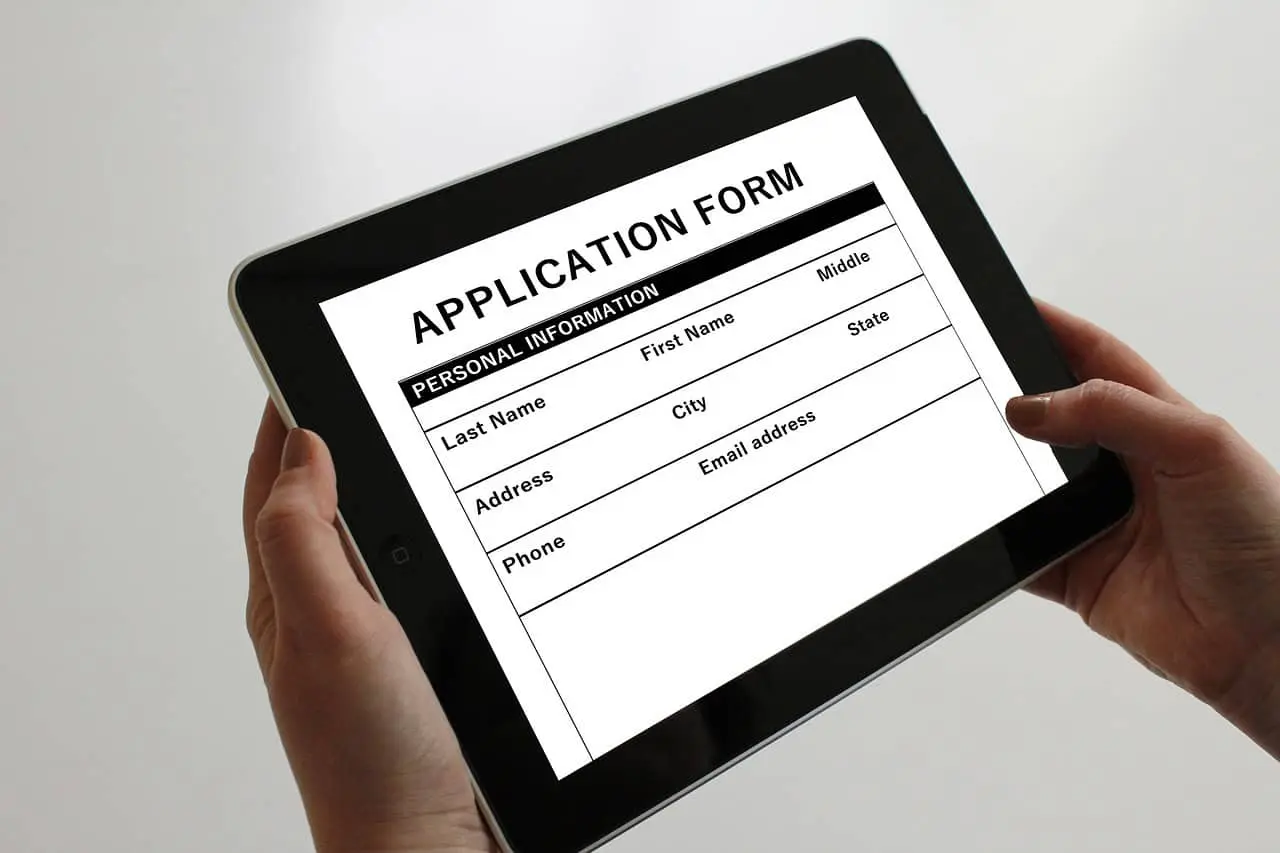Survey reports that 99% of Fortune 500 companies use automated tools in the interview process.
And an on demand video interview is one of methods through which companies find decent employees. It is really very helpful for employers as well as the person looking for a job because it speeds up the process and cuts unnecessary effort. Instead of two individuals on live meeting, companies can accept applications without needing the job-seeker to attend.
On demand interviews allow companies to get a quick look at several people from all over and enable them to evaluate the best applicants and judge their credibility via videos they submit.

What is an On-Demand Video Interview?
An on demand video interview is a kind of job interview in which questions are presented on a display, and the person answers using a smartphone or a computer. There is no real-time talking. A recruiter or hiring manager asks pre-setting questions on an online platform while the candidate uses a smartphone or computer to record their answers.
The on-demand interview is flexible and can be conducted by everyone on their timetable. The candidates can record responses when they are ready; there is no need to wait for another appointment. Sometimes, it makes the job seeker less anxious since they have more time to respond.
The video's answers are watched later when employers have spare time. They can see how articulate the speakers are, how convincing their voice comes across, and how usefully they respond to inquiries so that they can weed out the undesirables and pick their team.
So they can easily find the ideal person for the job in the initial stage of hiring without having to meet everyone.
Advantages of On Demand Video Interviewing for Employers
Allowing companies to hire people faster and find the best workers anywhere. The secret to reaching you without talking to each individual live is that companies can view recorded answers, provided they have time. This quickens hiring.
1. Fasten Hiring
On demand interview allows companies to hire efficient and effective people straight away by setting up calls with dozens or hundreds of prospective candidates. Rather than one-on-one around and each person live, companies receive and interview any videos that come through.
2. More People Can Apply
Because people don't need to go anywhere, the co-op can receive more job seekers from all over. Laws are written in a very general way so that they apply to anyone, allowing workers from all over to choose.
3. Save Time for Everyone
Managers do not get to interview each individual one by one. They can view all the videos quickly, skip the people that do not meet the basic requirements, and work only with the most superior. That streamlines the process.
4. Helps Select the Right People
Be careful when answering; they can compare your answers to see how accurately each contestant fits. They look at how well someone speaks or answers clearly and looks confident. For this reason, they can decide on picking the right person for the job.
4. Pros Pick Great Workers
Observe the answers from two to three people carefully and see if they are real. 2* Managers can rate if a speaker speaks fast, slow, and clearly.
Common Challenges Employers Face with On-Demand Video Interview
On demand digital interviews help companies hire faster, but they usually raise other questions. Employers face many downgrades in this job.
1. Varying Answers From the Candidates
Because we procrastinated answering on demand interview questions alone, some received very short advice, and most conversed too long, making it impossible to compare them. In a live interview, the company can ask the candidate their queries as per their will, but in a video interview, they cannot.
2. Technical Issues
Not everyone has great bandwidth and a reliable camera. If the video is unclear or the voice is not audible, the company will not understand what is being said. You can imagine the challenge of hiring.
3. Not Human-to-human Talking
The company is not live, so if anything is confusing, they will not be able to ask further questions. The task is to score based only on the video, even if the person has more good things to say.
4. Other People Not Enjoying Video Interviews
Job hunters get made to record, and many do not like the idea of hearing themselves. Most have no issue with it, and some have problems because they would rather type or chat with a human. When way too many individuals are missing interviews, the business will let their best employees slip away,
How to Avoid Them
1. Ask Sharp Questions
If one group gives really short answers and another runs on for too long, write a clear question with this in mind. They may be able to say, "Give your excuse in 2 minutes so everyone has the right length.
2. Start technology check upfront
Some people have bad internet or blurry videos. Sometimes, companies should ask people to check out their cameras and see how well the sound works before filming. Then, the people are prepared, and the company has a good video.
3. Allowing Jobs to Wait to Reply
Since companies cannot ask more on demand video interview questions in real time, employers should necessarily give time to the candidates. Instead of constantly asking people to type as fast as possible, they can give 3-4 seconds before recording.
4. Apply for Everyone
Some people are shy and don't like video interviews. You can tell them what it is and ask if they want to practice.

How to Structure an Effective On-Demand Interview
In video on demand interview companies should ask clear questions to filter employees for better results. This will guide them in easily picking a worker.
1. Use Simple, Plain, and Meaningful Questions
Companies should ask straightforward on demand interview meaning questions so job searchers do not get confused.
2. Establish a Time Frame That Inspires
Each response should be pithy but nonetheless liberally informed. If it is too quick, the company doesn't learn much. Unless it is super long, it takes forever to watch. A good one is 50–150 seconds for simple responses and 1–2 minutes for long winds.
3. Allow People to Warm Up
Get a few seconds of your autoresponder before you start recording. This helps them feel calm and release the built-up adrenaline.
4. Ask People to Use Their Spot Camera and Test the Sound
Some people may be standing too far away, resulting in blurry videos or bad sound. Let them try out the setup before anything.
5. Friendly and Clear
The interview should be approachable, not fear-inducing! A friendly message such as "Relax and just do our absolute best!" can make job seekers feel better.
Key Features of On-Demand Video Interview
It's completely on-demand, and video interviews are a special feature that the company needs to leverage to hire the best workers quickly.
1. AI-Powered Analysis
AI checks videos with smart computers (AI). Some tools can:
- Listen to the clarity of speaking
- Looks at their confidence and expressions
- Help companies hire the right people quickly
2. Works on both Phones and Computers
Anyone can record answers using any device (phone, tablet, or computer). This eases the lives of job seekers, as they do not need to carry special equipment.
3. Job Seekers Can Record Anytime
So, with people answering, it permits them not to feel as if they are being rushed and meeting on learning.
4. Let users Watch Anytime
Each person in the company does not need to be scheduled for a meeting with the company. They can watch videos when they run out, which facilitates hiring speedily.
5. Automatic Real-time Transcription and Translation
Some apps can add captions or translate the answers. This makes it easy to get to know each person, even if you speak another language.
When to Use On Demand Virtual Interview
On demand interviews are super helpful for companies in many different scenarios. They are especially useful when the candidate pool is large, hiring is quick, or candidates come from far away.
1. Over Applying
It is hard for the company to talk to each person one by one if 100 people want the same job. Videos allow candidates to record responses and company reviews quickly and pick the best.
2. Sitting on an Interview
Sometimes, you need to fill jobs quickly. Instead of waiting for an in-person interview, they can consume the content and decide at their convenience and hire faster.
3. When Hiring from Different Locations
Technology solutions are helpful if a company has staff in several cities or even countries. Answers can be recorded at home, so there is no need to travel for an interview.
4. Positions Require Great Speaking
If a job requires strong communication, such as in customer service or sales, video interviews allow companies to see how polished a person is when speaking before they hire.
5. When Companies Want To Play Fair With All
Everyone was asked the same on demand video interview questions and time period. The process is fair, and companies can pick the best person without bias.
How On-Demand Interview Process Differ from Live Format
There are various types of on demand interviewing system, and they work differently. Here are the differences between on-demand video interviews, live interviews, and one-way interviews.
1. "On-Demand" format
- Person record answers alone
- No live interviewer
- People can record anytime and anywhere
- After people watch all the videos, select the best
It is good when lots of people are applying, when hiring is fast, and when workers live far away.
2. "Live" format
- Person-to-person conversation (on a call like Zoom or Face-time)
- The interviewer asks additional questions
- The person must be there at a set time
Good for talking to people and getting additional questions from them.

How to Improve Candidate Experience in On Demand Interviews
Job seekers should be able to conduct on-demand video interview and achieve the best results easily. Here are some ways to make it easier for them.
1. Give Instructions Carefully
Companies need to let a job seeker know what he can do. They could say:
- Number of questions
- The time they schedule
- How do we do their recordings?
2. Where possible, use an Easy Access Platform
The interview should work on phones and computers with big buttons to start, stop, and send your video. It has to be difficult. Otherwise, some people might not finish it.
3. Allow Job Seekers to Try Before Doing
Enforce that people test their eyes and listen before revealing real answers. This way, they are not worried about blackish videos or no sound.
Testing gives people the chance to open up, thereby being more comfortable in answering.
4. Offer Retakes
Job applicants should also be given an opportunity to touch and make astute mistakes. This will help you keep them less anxious, and they will be able to display the best responses.
5. Give Feedback After the Interview
Companies should tell the job seeker whether they got the job or not. A simple thank you message for someone not selected tells that they were respected. Feedback helps people learn and feel good about the process.
Are On-Demand Interviews AI-Reviewed?
Yes, AI sometimes companies use to check live video interview on demand. After all, it was not always like that. So, here I am going to tell you how exactly AI works and whether it can be good or bad.
Interviews Are Being AI-Reviewed
AI observes and hears what job seekers say. Humans will also view the videos if need be to make a final pick. It can:
- See clearly what kind of person speaks for any person
- Observing facial gestures for confidence
- Words that read and scored answers on the job
How Companies are Currently Using AI
- The only help AI gives: It helps by scoring for the machines, but the decision-making is always in our hands
- AI and Humans Team up: AI gets first go after, then humans pick the best answers.
- AI decides alone: AI decides alone whom to bring forward.
Pros
- Fast: AI can check multiple videos at once.
- Fair: AI treats everyone the same and not like some others.
- Time-saving AI: Companies get the best answers first.
Cons
- Does Miss Good Candidates: AI cannot always fully hear an accent or conversational style.
- No Human Touch: AI is more of an emotionless machine than your everyday walking, talking human.
- Incorrect on Multiple Occasions: AI still makes mistakes, so the company needs humans to do the evaluation.
Conclusion
On demand digital interview assist companies in identifying top talents for available jobs. They do not conduct interviews live with the job seekers—the job seekers respond by recording the answers. So, the interview is easy and fast for both the company and the job seeker.
Companies don't have to reschedule meetings. They can watch videos anytime and select the best candidates. Employers can also prepare for the potential interview by having the candidates record from anywhere, providing a very flexible time frame. Employers sometimes use AI to help review these videos. Yes, AI can read speech, evaluate confidence, and provide answers, but humans are ultimately the final judges. AI even makes hiring faster, but the human touch has to be there as well.
"On demand" method is useful for companies, and they must make it easy for job seekers. Crystal clear instructions, interview screen tool, and feedback will dissuade people from feeling inhibited.
A good interview feels great, and people really want to work their way up. In general, on-demand video interviews are an effective and fair practice that helps both companies and job seekers get things right fast. They simply provide ease and joy to a company and job seekers by making it easy. With the new technology these days, it will only get better.
FAQ
Can Employers Set Time Limits For Responses?
Yes, employers can limit the length of time for answers. This means that from now on, the job seekers have to finish in time, like in 1 or 2 minutes. This allows companies to compare answers quickly and preserve interviews for all competitors equally. Unless your time runs out, the video does not begin to record. This ensures that candidates speak clearly and stay focused.
What Industries Use On-Demand Video Interviews The Most?
On demand virtual interviews are used across many industries to hire. Overall, they are a time—and cost-effective way of hiring.
- Retail and customer service: Stores and call centers hire workers in no time.
- Technology & IT: Companies find skilled people for tech positions.
- Hospitals: Hire nurses and doctors fast.
- Technology and Banking: Conducting skills checks of job seekers.
How Do Employers Prepare For On Demand Video Interviewing?
Proper planning is essential for employers. This enables the job seeker to have a good experience and ensures that the company gets the very best. So rules are next:
- Has written out questions so that seekers know what answers are expected.
- Limit the time for answers so they are shorter and fair.
- Choosing a simple, user-friendly platform for recording is step 5, she stresses.
- They test the system to find out if anything is wrong.